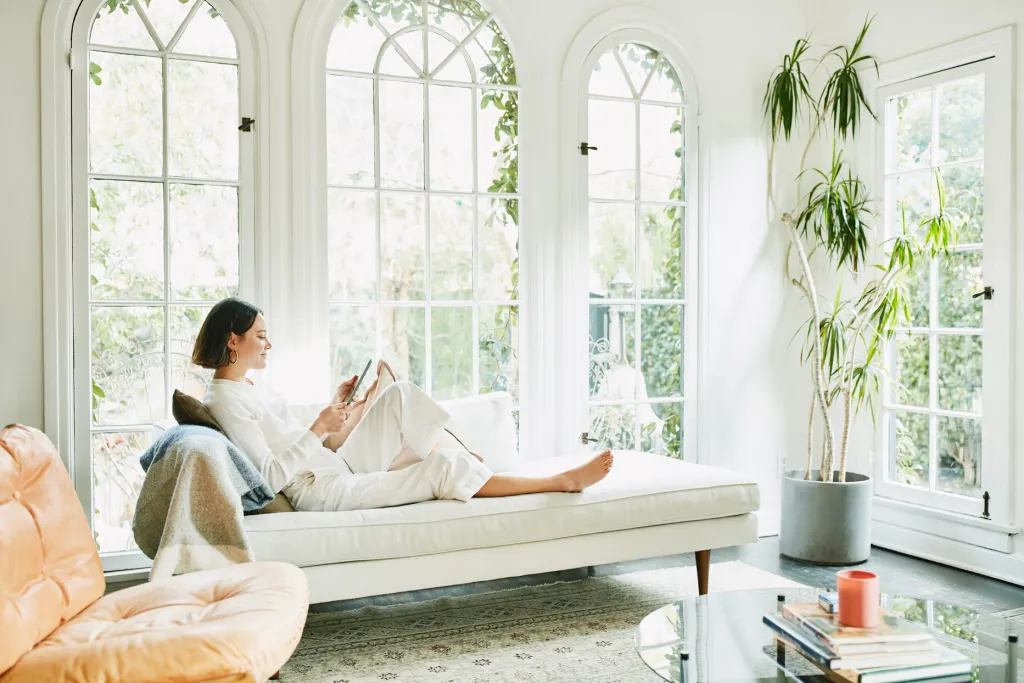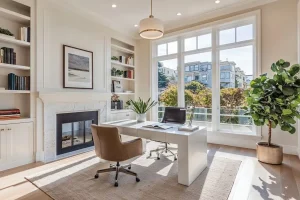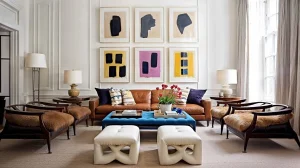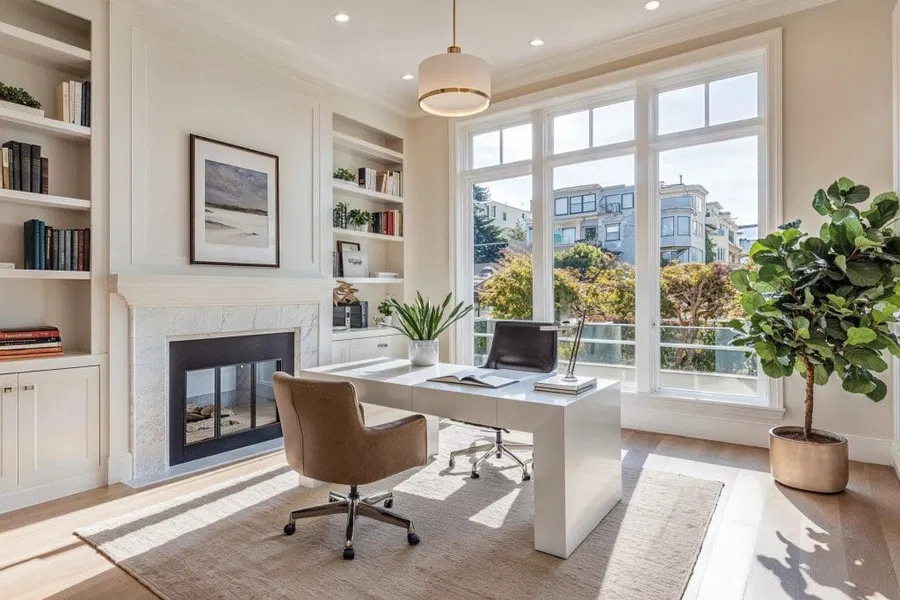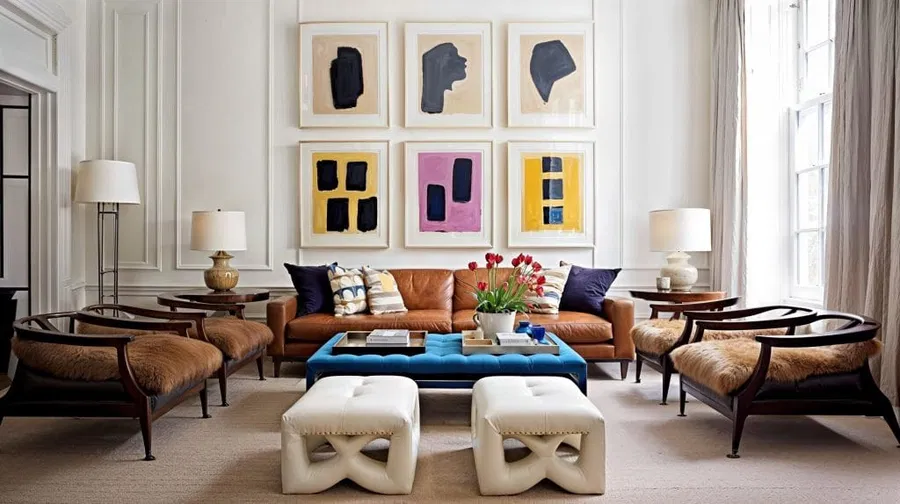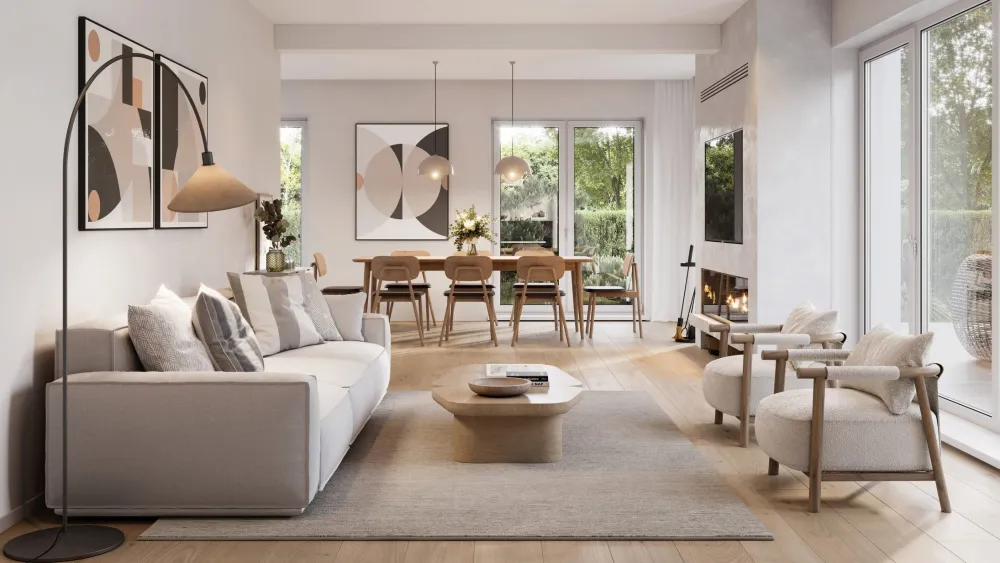Have you ever walked into a room and felt an immediate sense of calm, or perhaps a surge of energy? The way spaces are designed affects us far more than we often realize. Interior design isn’t just about aesthetics; it shapes our emotions, productivity, and overall well-being. In this article, we’ll explore how elements such as color, layout, lighting, textures, and personalization influence our mood and how you can use these insights to craft environments that nurture both body and mind.
Why Interior Design Psychology Matters
Our surroundings have a profound impact on our mental state. A cluttered, dimly lit room can heighten stress, while a well-organized, bright space can boost focus and relaxation. Beyond aesthetics, interior design psychology taps into human behavior, making it a crucial tool for creating spaces that support emotional health, productivity, and comfort. Companies, homes, and public spaces alike benefit from intentional design choices that resonate with human psychology.
Color Psychology in Interior Spaces
Color is perhaps the most powerful tool in interior design. Warm tones such as reds and oranges evoke energy and excitement, which can make a kitchen or creative space feel vibrant. Conversely, cool colors like blues and greens have a calming effect, ideal for bedrooms or study areas where focus and relaxation are needed. Neutral tones act as a balancing canvas, providing a sense of sophistication and serenity. Even subtle accents—like a throw pillow or wall art—can dramatically shift a room’s energy, demonstrating that color impacts mood in nuanced ways beyond mere decoration.
Layout and Spatial Flow

The arrangement of furniture and the flow of a room affect how we move, interact, and feel. Open layouts often feel liberating, encouraging interaction and flexibility, while closed, segmented spaces can provide privacy and a sense of coziness. Even the orientation of furniture matters; a seating arrangement facing outward can evoke freedom and openness, whereas inward-facing layouts promote connection and intimacy. Spaces designed with clear pathways and thoughtful circulation not only prevent physical frustration but also contribute to mental ease.
Lighting and Mood
Lighting dramatically alters perception and emotional response. Natural light has been shown to enhance mood, regulate sleep, and increase productivity. Artificial lighting, when used strategically, can further influence atmosphere. Warm ambient lighting soothes and encourages relaxation, while bright, cool lighting supports focus and alertness. Layering light with a combination of task, ambient, and accent sources ensures that spaces can adapt to different activities and moods throughout the day.
Materials, Textures & Sensory Experience
Beyond visual aesthetics, textures and materials affect our senses and emotions. Natural elements such as wood, stone, and greenery invoke a grounding, calming effect linked to biophilic design principles. Smooth, sleek surfaces can feel modern and orderly, whereas soft textiles invite comfort and warmth. The interplay of different textures enriches the sensory experience, subtly influencing how a room is perceived and experienced. Even scents, like fresh flowers or natural linens, can complement these visual and tactile cues, reinforcing emotional response.
Personalization & Identity in Space

The spaces we inhabit should reflect our identity. Personal items, artwork, or objects tied to memories create emotional resonance, making a room feel uniquely ours. Minimalism works for some by promoting calm and clarity, but for others, a carefully curated mix of personal artifacts can foster joy and inspiration. The key is aligning design with the inhabitants’ personality and needs, ensuring the space supports rather than overwhelms.
Case Studies & Real-Life Examples
Consider a home office redesigned with natural light, green accents, and an uncluttered layout. The individual using this space reports increased focus and reduced stress, demonstrating how intentional design improves productivity and mood. Similarly, living rooms that swap harsh lighting for soft, layered illumination create warmth and relaxation, encouraging social interaction and comfort. Even in public spaces like hotel lobbies, colors, lighting, and furniture arrangements are carefully chosen to influence how visitors feel and behave.
Actionable Tips for Readers
Implementing psychological principles in your space doesn’t require a complete overhaul. Start by evaluating how your current environment makes you feel. Consider incorporating more natural light, introducing calming colors, or adding tactile elements like rugs and cushions to enhance comfort. Rearranging furniture to improve flow and integrating personal touches can instantly transform a room’s mood, demonstrating that thoughtful design need not be complicated.
Quick Wins for Immediate Impact:
- Introduce a mix of natural and soft artificial lighting.
- Use a calming color palette with strategic pops of accent tones.
- Add textures and personal items that evoke positive memories.
Common Pitfalls to Avoid
Overloading spaces with conflicting colors or textures can create visual chaos and stress. Ignoring a room’s function—like placing warm, dim lights in a workspace—can reduce productivity. Equally, forcing a design trend that clashes with personal comfort will undermine the emotional benefits of any space. Awareness of these pitfalls ensures that interior design enhances rather than disrupts mental well-being.
Interior design is far more than decoration; it’s a powerful tool that shapes mood, behavior, and overall quality of life. By understanding how color, layout, lighting, textures, and personalization influence our emotional and cognitive responses, anyone can create spaces that nurture both comfort and productivity. Even small, mindful adjustments—like changing a wall color or repositioning furniture—can transform how you feel in a room. Start with one change today, and notice the difference in your daily experience.
